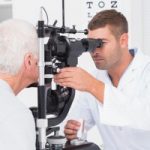
Ptosis isn’t just giving your face a tired appearance. It can come with vision complications, such as astigmatism, obstruction of visual axis, a chin-up head position, and amblyopia (lazy eye).
Causes of ptosis
Ptosis develops when the muscles that enable the eyelid to move up and down weaken, resulting in a drooping upper eyelid. This can happen due to aging or injury.
Nerve damage can also lead to ptosis, with the most common cause being Horner’s syndrome. Horner’s syndrome is usually associated with an underlying condition such as stroke and other brain injuries.
Other chronic conditions can increase a person’s risk of ptosis, too, including diabetes, cluster headaches, and myasthenia gravis (a chronic autoimmune condition marked by abnormal muscle weakness).
Signs and symptoms of ptosis
The primary symptom of ptosis is a visible droopiness of one eye or both eyes. Other symptoms include increased tearing, difficulty seeing, as well as frequent eyebrow raising or tilting the head back in order to see better.
Diagnosis for ptosis

Blood tests may also be used to check for diabetes or autoimmune diseases that could be causing ptosis. Lastly, with an X-ray, a doctor can detect any structural abnormalities in the eyes that could be contributing to the problem.
Treatment options for ptosis
Treatment options for ptosis vary depending on the cause. For example, if ptosis is brought on by diabetes, you will have to treat and manage diabetes. Other treatment options for ptosis involve addressing any nerve damage, tumors, cancer, or injuries associated with the drooping eyelid.
To treat inborn ptosis, a surgery will be required to manually tighten the drooping eyelid muscles.